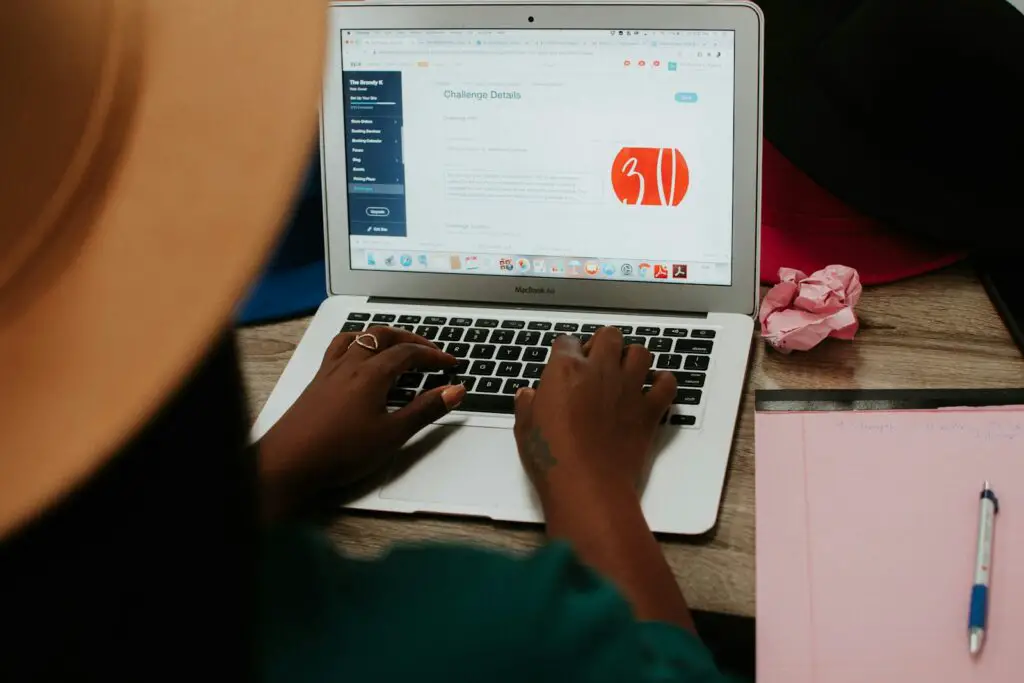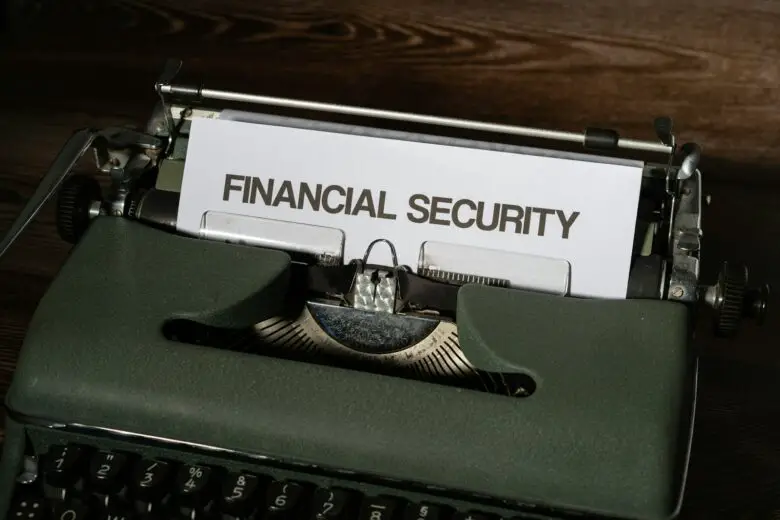As a freelancer or gig worker, you know that financial security doesn’t come easy. The very nature of on-demand work makes it difficult to rely on steady paychecks or employer-sponsored benefits. However, with the right strategies, you can take control of your finances despite the unpredictability of freelance life. In this article, we’ll explore tips to help you maximize earnings, manage expenses, and plan for the future. You’ll discover ways to smooth out income fluctuations, secure affordable health insurance, and sock away funds for retirement.
While it takes diligence and discipline, financial security is possible for on-demand workers. With insight on taxes, budgeting, and more, you’ll gain the knowledge needed to thrive financially, even in the gig economy. Equipped with actionable advice, you can steadily build wealth over time through smart money management.
The Gig Economy Is Here to Stay
The gig economy, driven by freelance and contract work, is anticipated to constitute a substantial portion of the overall economy. According to an Intuit study, gig workers are predicted to represent 43% of the U.S. workforce by 2020.
Engaging in freelance work offers flexibility and independence but introduces uncertainty. As a gig worker, your income may vary, and typically, you do not enjoy employee benefits such as healthcare, paid time off, or retirement plans.
To attain financial security in the gig economy, it is essential to proactively manage your finances. Establish an emergency fund equivalent to at least six months of expenses to cope with potential income interruptions. Explore high-deductible health plans and health savings accounts (HSAs) for managing medical costs.
Regularly contribute to an individual retirement account (IRA) or solo 401(k) to secure your financial future. Building these financial safeguards will enhance your overall financial security in the gig economy.
Diversifying your income streams can also help reduce risk. Don’t rely on a single client, customer, or income source. Develop your skills and offer a range of services to cast a wider net. You might combine multiple part-time roles, for example.
Consider forming business partnerships or joining coworking spaces to expand your network and find new opportunities.
The future of work is flexible, autonomous, and self-directed. While the path to financial security in the gig economy requires diligent saving and planning, the potential rewards of independence and work-life balance can make the effort worthwhile. With prudent management of your income, expenses, and retirement planning, you can thrive in the gig economy.

Unique Financial Challenges for Freelancers
As a freelancer, you face financial uncertainties that traditional employees do not. Without the security of a steady paycheck, you must take proactive steps to safeguard your finances.
Unpredictable Income
Your income as a freelancer can fluctuate from month to month based on the number and size of projects you have. During busy periods, you may earn more than expected. However, during slower months, your income may decrease significantly. To prepare for fluctuations in your income, you should budget conservatively based on your minimum projected earnings. You should also try to build an emergency fund with 6-12 months of essential expenses.
Inconsistent Work
There is no guarantee of ongoing work as a freelancer. Projects can end abruptly, budgets may change, and clients can disappear without warning. While the flexibility of freelancing is appealing, the uncertainty can be stressful. To reduce inconsistency in your workload, try to build long-term relationships with repeat clients, market your services on a regular basis, and diversify your client base. Having multiple sources of work will make you less dependent on any single client.
Lack of Benefits
As a freelancer, you do not receive traditional employee benefits like retirement plans, health insurance, or paid time off. You are responsible for finding and funding your own benefits. Options for freelancers include health insurance via private insurance or the Affordable Care Act, retirement plans like an IRA or SEP IRA, and budgeting additional funds for time off. Providing your own benefits is a significant financial responsibility, so make sure you charge rates that allow you to properly fund them.
With proactive financial management and stability-building practices, freelancers can achieve a level of financial security and independence. Though uncertainty will always remain an inherent part of freelancing, through planning and diversification, you can minimize financial stress and gain confidence in your ability to earn and provide for yourself.
Building Emergency Savings as a Contractor
For an independent contractor, maintaining an emergency fund is essential to navigate the fluctuations in irregular income and unforeseen expenses. Strive to accumulate sufficient savings to address a minimum of 3-6 months’ worth of essential expenses, providing a financial cushion for potential job loss or intervals between clients.
Set a Savings Goal and Timeline
Determine how much you need each month to pay for rent, food, debt payments, and other necessities. Then multiply that amount by 3 to 6 months to set your emergency fund target. Create a realistic timeline, like saving $500 to $1,000 per month, to achieve your goal within 6-18 months. Automate transfers from your checking to savings account each month to build the fund steadily over time.
Reduce Expenses and Increase Income
Look for ways to trim your budget by decreasing discretionary spending on dining out, entertainment, and hobbies. Any money saved can be put towards your emergency fund. You might also consider taking on additional temporary work or clients to generate extra income for a short period. The more you are able to set aside each month, the faster your emergency fund will grow.
Keep the Money Accessible but Separate
Your emergency fund should be kept and saved in a savings account for easy access when needed. However, it should be separate from your everyday spending money. Many banks offer high-yield savings accounts with competitive interest rates. Look for accounts with limited restrictions on withdrawals so you have flexibility in an emergency.
Building an emergency fund may require financial discipline and sacrifice, but the security and stability it provides for your business and personal finances are well worth the effort. With diligent saving over time, you can ensure you have a financial cushion and contingency plan for unexpected challenges that may arise.
Managing Irregular Income
Budgeting and Expense Tracking
As an independent contractor, your income may fluctuate from month to month. To ensure your financial security, develop a strict budget that accounts for irregular income and variable expenses. Track your income and expenses regularly using budgeting software or an old-fashioned spreadsheet. Examine potential areas for expense reduction or elimination in months with income fluctuations. Establish an emergency fund, covering a minimum of three to six months’ essential expenses, to mitigate financial disruptions in case of income interruptions.
Invoice Promptly
Freelancers are often asked to submit invoices for payment after completing projects. You should invoice as soon as possible after completing the work to ensure timely payment. Many freelance clients have 30- or 45-day payment terms, so submitting an invoice quickly will help maximize your available cash flow. If a client pays late or refuses payment altogether, you may need to follow up to receive the income you are due.
Diversify Your Income Streams
Do not rely on one or two large clients for the bulk of your income. Having many smaller clients in different industries helps ensure your income will not disappear if one client cancels their contract. Look for new clients and project opportunities continuously so you always have work lined up as current projects end. Building a portfolio of long-term, repeat clients provides the most financial security.
Charge Competitive Rates
As an independent freelancer, you have control over the rates you charge clients. Make sure your rates are in line with industry standards and adequately cover your costs of doing business. If you consistently undercharge for your services, you may end up struggling to earn a living. Review your rates at least annually and consider increasing them based on your experience and skill level. Raising your rates for new clients can also help increase your income over time.
While managing irregular income as a freelancer can be challenging, implementing strong financial practices around budgeting, invoicing, income diversification, and rates will help ensure your financial security in the gig economy. Consistently monitoring your income, expenses, and cash flow allows you to make adjustments quickly if needed and avoid financial difficulties. With time and experience, maintaining steady income and financial well-being as an independent contractor can become second nature.
Establishing Multiple Income Streams
Diversify Your Service Offerings
As a freelancer, relying on a single source of income can be risky. To establish greater financial security, focus on diversifying your service offerings. This could include expanding into related areas that leverage your existing skills and experience. For example, if you currently offer writing services, consider also providing editing, proofreading or copywriting. Diversifying in this way provides more opportunities to generate revenue and creates stability in case one income stream experiences a downturn.
Develop Passive Income Sources
Passive income sources provide revenue with little ongoing effort required. Options for freelancers include creating online courses, ebooks, video tutorials, templates, or other digital products that continue generating sales with minimal maintenance. You do the work once but get paid repeatedly. While the initial time investment may be high, the long-term gains in financial security can be worth it.
Build Your Client Base
A larger, more diverse client base means less dependence on any single client and a more stable income overall. As an established freelancer, focus on networking to find new clients. This could include attending industry events, contacting past clients to check on new opportunities, and improving your online presence to increase visibility. When possible, try to balance one-time and ongoing clients as well as those in different industries. The wider your client net, the more financially secure your freelance business will become.
Consider a Side Hustle
For extra income without committing to another freelance role, consider a side hustle. This could be driving for a ridesharing service in your spare time, renting out extra space in your home on a short-term basis, selling unwanted items online, or participating in market research studies. While a side hustle may only generate a few hundred dollars a month, that can make a big difference in your financial security when combined with the income from your freelance business. Every little bit helps.
In summary, the key to greater financial security as a freelancer is diversifying your income streams. By expanding your service offerings, developing passive income sources, building a wider client base, and considering a side hustle, you can establish multiple revenue flows to minimize risk and gain stability. With time and consistency, you can achieve a level of financial security that allows you to thrive in the gig economy.

Controlling Expenses & Living Below Your Means
Reduce Fixed Costs
As a freelancer, reducing fixed monthly costs is key to financial security. Look for ways to lower or eliminate expenses like rent, utilities, insurance premiums, and loan payments. Consider relocating to an area with a lower cost of living or renegotiating existing contracts. The money saved can be put towards building an emergency fund.
Create a Realistic Budget
Create a detailed budget covering both personal and business expenses. Monitor fluctuating costs monthly to accurately assess spending, identifying areas for potential reduction. Strive to spend less than your monthly earnings, allocating the surplus to your emergency fund and retirement savings. Review and revise your budget regularly based on changes in income or expenses.
Limit Discretionary Spending
Discretionary spending on things like dining out, entertainment, and hobbies should be limited. While rewarding yourself periodically is fine, frequent lavish spending can quickly deplete your finances. Look for free or low-cost alternatives for discretionary activities. If needed, cut up credit cards to avoid temptation and racking up debt.
Prepare for Periods Without Work
As a freelancer, there will inevitably be periods where work is scarce or payments are delayed. Build an emergency fund with enough to cover essential expenses for 3 to 6 months to ensure you remain financially secure during these times. When work is plentiful, pay off any high-interest debt and contribute excess earnings to your emergency fund and retirement account. With diligent saving during peak periods, you’ll have a financial cushion to fall back on when work is slow.
Controlling costs and limiting expenses, especially discretionary spending, are key to establishing financial security as a freelancer. Creating a realistic budget, reducing fixed costs, and preparing for periods without work by building an emergency fund will help ensure your financial stability even when facing the uncertainties of freelance work. With discipline and prudent financial management, you can achieve peace of mind about money matters.
Self-Employment Tax Considerations
As an independent contractor, you are responsible for paying self-employment tax on your income to fund Social Security and Medicare. Self-employment tax is calculated at 15.3% of your net earnings from self-employment. It is comprised of a 12.4% Social Security tax and a 2.9% Medicare tax.
Calculate Your Self-Employment Tax Liability
To ascertain your self-employment tax obligation, calculate your net earnings by deducting eligible business expenses from your business’s gross income. Report the resulting net earnings on Schedule SE, filed with your Form 1040 tax return. The self-employment tax owed is 15.3% of your Schedule SE net earnings, capped at the Social Security wage base maximum.
Make Quarterly Estimated Tax Payments
As a self-employed individual, you must make quarterly estimated tax payments to avoid potential penalties. The estimated tax includes your income tax as well as your self-employment tax liability. You must pay at least 90% of your current tax year liability or 100% of your previous year’s tax liability, whichever is less. You can pay your quarterly estimated taxes online, by phone, or by mail using IRS Form 1040-ES.
Deduct the Employer-Equivalent Portion
One benefit of paying self-employment tax is that you can deduct the employer-equivalent portion of this tax when calculating your income taxes. The employer portion of Social Security and Medicare taxes is 7.65%. You can deduct half of your self-employment tax liability, which equals 7.65%, from your net business income on Schedule 1 of Form 1040. This helps offset part of the increased tax burden that self-employed individuals face.
To ease the burden of self-employment taxes, set money aside from each payment you receive to put towards your tax liability. Keep good records of your income and expenses, and work with an accountant to determine an appropriate quarterly estimated tax payment to avoid underpayment penalties. By understanding your obligations and taking advantage of available deductions, you can achieve greater financial security as a self-employed individual.
Retirement Planning for the Self-Employed
As a freelancer, the responsibility of planning for your financial security after retirement rests solely on your shoulders. Unlike traditional employees, you do not have access to employer-sponsored retirement plans. However, there are several options available for the self-employed to save and invest for retirement.
You may establish tax-advantaged retirement accounts, such as an individual 401(k) or solo 401(k), which allow you to contribute a percentage of your self-employment income up to $56,000 in 2019. A Simplified Employee Pension (SEP) IRA permits you to contribute up to 25% of your net earnings from self-employment, with a maximum contribution of $56,000. A SIMPLE IRA also provides an opportunity to save up to $13,000 in 2019, with additional catch-up contributions of $3,000 if over age 50.
Consider opening a Roth IRA which allows your contributions to grow tax-free. While contributions are not tax-deductible, qualified distributions in retirement are tax-free. The maximum contribution for 2019 is $6,000, plus an additional $1,000 if over age 50.
In addition to retirement accounts, build other savings and investment vehicles into your financial plan. Accumulate an emergency fund with enough to cover six months of essential expenses in case of loss of work or clients. Pay off high-interest debts and keep low-interest debts at a minimum. Invest in the stock market through low-cost index funds for long-term growth. Consider fixed-income investments like certificates of deposit or Treasury securities for stability. Diversify your investments to reduce risk.
Review and rebalance your investment portfolio periodically based on your financial goals and timeline to retirement. Make adjustments as needed to ensure the optimal allocation of your assets. Planning for your financial security requires diligent effort and discipline, but will provide peace of mind for your retirement years. With the proper savings and investment strategies tailored to your needs as a self-employed individual, you can achieve financial freedom and thrive in the gig economy.
Financial Security FAQs for Freelancers
As a freelancer or gig worker, your income and expenses can fluctuate, making financial security challenging. However, by implementing prudent practices, you can achieve stability.
Do I need an emergency fund?
Yes, as a freelancer, an emergency fund is essential. Aim for saving enough to cover 3-6 months of essential expenses in case of income loss. This fund provides a financial cushion so you can pay for necessities during lean times.
How can I budget effectively?
Create a budget to track your income and expenses. List your monthly income, fixed expenses like rent and variable expenses. Look for expenses to reduce or eliminate. A budget helps ensure your spending aligns with your income and financial goals. Review and revise your budget regularly based on changes in income or expenses.
Should I have separate business and personal accounts?
Maintaining separate business and personal checking accounts is recommended. Deposit all business income into your business account and pay all business expenses from it. This simplifies accounting and taxes. Use your personal account for living expenses.
How often should I review my financials?
Review your income, expenses, budget, and cash flow weekly or monthly. Look for any areas of overspending or income shortfalls and make corrections quickly. Review your emergency fund, savings, and investment accounts regularly to ensure you are making progress toward your financial goals. Make adjustments as needed to get back on track.
What insurance do I need?
As a freelancer, prioritize health, disability, and business insurance. Health insurance protects against unforeseen medical costs. Disability insurance provides income if you cannot work due to injury or illness. Business insurance protects you from liability and can include errors and omissions insurance. Also consider life, home, and auto insurance based on your personal needs.
Achieving financial security as a freelancer requires ongoing effort and diligence. Implementing the practices discussed here will help establish a solid financial foundation, so you can focus on what you do best–your work. Continually review and refine your approach to money management, making changes as your income and needs evolve over time.
Conclusion
As you navigate the gig economy, prioritize building your financial security. Automate savings to ensure you consistently set funds aside, even on months with unpredictable income. Seek affordable benefits like health insurance to safeguard from unexpected costs. Diversify your client base and skills to create stability when one revenue stream is disrupted.
While the flexibility of freelance work is appealing, be thoughtful in laying foundations that support your financial wellbeing now and in the future. The gig economy offers freedom, but your diligence in planning is essential to experience that freedom without constant financial stress. With intention, you can thrive on your own terms.















Thank you for helping out, superb information. “Nobody can be exactly like me. Sometimes even I have trouble doing it.” by Tallulah Bankhead.